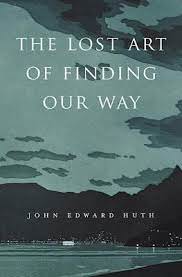It’s a moment that you’ve always dreaded – you stepped away from your hiking buddies to take a photo, but on the way back you slipped down an embankment. Now you’re isolated, you can’t find the trail or your friends, and you’re in unfamiliar woods. You try your phone – no signal. How did people navigate before GPS, anyway? In The Lost Art of Finding Our Way, author John Edward Huth aims to show us just that. In a richly-illustrated 544 pages, Huth tries to illuminate the techniques that let man circumnavigate the globe, long before the first GPS satellite was launched.
The book is divided into roughly two halves, with the first being historical tales and discussions of techniques used by ancient navigators to find their way. The Norse are here, as are Pacific Islanders and European sailors: all have lessons to teach us about our environment, from the way that waves form around a cluster of islands, to how to use a cross-staff to estimate the position of a star on a heaving ship deck. Following this, the second half of the book is more abstract, dealing with factors useful to navigators: like weather prediction, or the factors that create the swell and tides in the ocean.
I found the first half of the book to be the most interesting, as the practical techniques for, say, triangulating your position with only a map and a compass are very interesting to a city-bound boy. The second half was much tougher reading as it is quite dry, often reading like a physics textbook. Descriptions are clear, although I will note that if you were looking for a practical manual to teach you navigation, this book isn’t it. It will, for instance, explain how dip angle and refraction in the atmosphere complicate accurate estimates of the horizon and the elevation of stars—but stop short of pointing you a resource to help correct for these inaccuracies.
It’s perhaps ironic that The Lost Art of Finding Our Way sometimes feels a little directionless. Maybe it’s because the very scope of the book is so large: in the one book, you can find a discussion of how search parties can be most efficient; descriptions of the magnetic field variations across the Earth’s surface, and their causes; speculation as to why many cultures have ‘great flood’ myths; and an explanation of the physics of wind interacting with sails.
Overall, this book is an impressive attempt to give a broad overview of a number of navigation techniques. Unfortunately it is marred by its own ambition, and the result is a book that can at times feel random, aimless and meandering.

